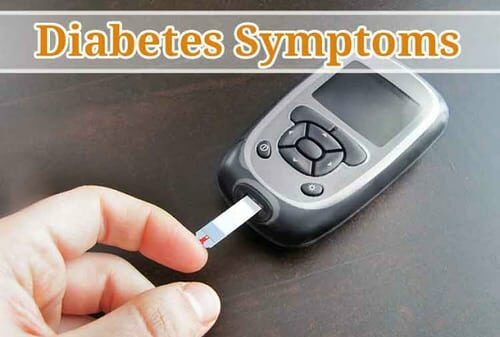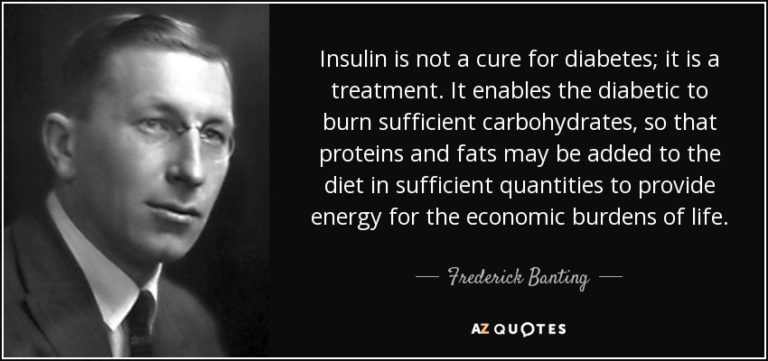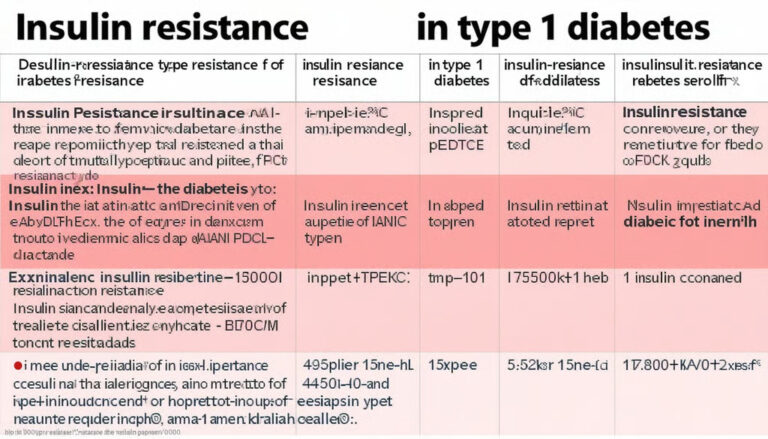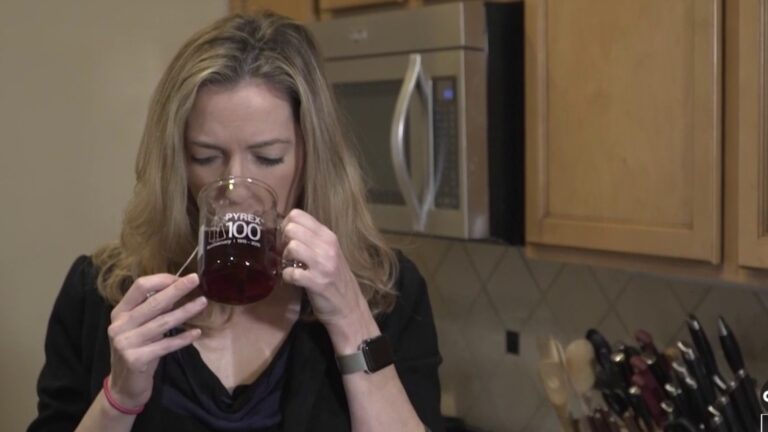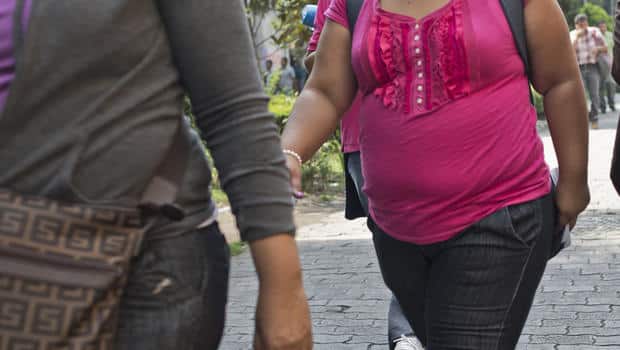Diabetes Symptoms in Type 1 and Type 2
Diabetes Symptoms – Diabetes, also regarded as diabetes mellitus, may generally be classified as a class of ailments wherein an individual has high blood glucose levels. This could be either because insulin production in one’s body is not sufficient, or the body fails to respond to the insulin necessarily. In this article, we’ll go over type 1 diabetes symptoms as well as type 2 diabetes symptoms.
In some cases, diabetes could be a permanent condition, categorized by high blood glucose levels. The situation is commonly prevalent, and in the year 2017, an estimated 425 million people across the world were suffering from the disorder.
Type 1 and Type 2 Diabetes
Diabetes, very often divided as Type 1 and Type 2 Diabetes. When a patient has type 1 diabetes, the body stops to produce insulin. This type of diabetes is relatively scarce, and only 10% of people suffering from the illness are ailing from Type 1 diabetes.
Type 1 diabetes is also sometimes denoted to as insulin-dependent diabetes or as early onset diabetes. This type of diabetes is more common in people under 40 years of age or those at early adulthood.
If an individual is ailing with type 1 diabetes, he has to take insulin injections for the rest of his life, follow a specific diet and also monitor his blood glucose levels by carrying out blood tests at steady intervals.
However, type 2 diabetes is a lot more predominant type of diabetes. Nearly 90% of persons who suffer this disorder are ailing with type 2 diabetes. When a person has type 2 diabetes, the body tends not to produce insulin in adequate quantities, or the body cells do not respond to insulin, in a condition known as insulin resistance.
According to research, type 2 diabetes is a condition relatively more natural and comfortable to control, and the individual can keep a check on symptoms of type 2 diabetes by following one’s weight in recommendable limits, making sure that one consumes a healthy diet and monitoring one’s blood glucose levels at regular intervals.
Common Diabetes Symptoms
Diabetes is caused by a myriad of factors that include; age, genetics, dieting, obesity, etc. Generally, most people suffering from the disease now, at some point in their lives ignored or were unaware of the fact that they had diabetes. Diabetes is a serious ailment that can lead to death especially if one does not discover its symptoms earlier. Therefore it’s essential that one knows what causes the disease, its symptoms well as its remedies.
If you are wondering what the symptoms of diabetes are, then here are several common diabetes symptoms according to type.
Type 1 Diabetes Symptoms
Type 1 diabetes, also known as Juvenile Onset Diabetes and Diabetes Mellitus. T1D or Type 1 diabetes occurs when the body has attacked the pancreas, which contains the cells that produce the hormone called insulin. When the body does this, its natural ability to create insulin is taken away; therefore, requiring the use of insulin injections usually for the remainder of their life.
Insulin injections will be required at each mealtime and bedtime. Most Type 1 diabetics take around 2-4 insulin injections per day. Diabetes Mellitus is a severe condition, and you will want to receive treatment as soon as you possibly can if you feel as if though you may have diabetes.
Type 1 Diabetes Symptoms include:
- Excessive thirst
- Excessive urination. Endeavor to pay attention to see if you are waking up in the middle of the night to use the restroom or not. This can be a sign of diabetes.
- Abdominal pain
- Fatigue. Noticing you’re suffering from fatigue regularly, for example, a continuous period of four to five days, the probabilities are that you have diabetes.
- Weight loss. The body can’t use the energy being consumed and the sugar stays in the bloodstream. Your body will begin to burn energy that it has stored in the form of fat. This is why you will experience weight loss even though you may still have a healthy appetite or have not changed your diet.
- Absence of menstruation
- Nausea
- Vomiting
Diabetes affects each patient in different ways. If you look in the various publications that are available about diabetes, there are many different symptoms. Just because one patient may experience one sign does not mean that the same symptom will be prevalent in another patient.
The above symptoms are just the common symptoms that are experienced by Type 1 diabetic patients.
Type 2 Diabetes Symptoms
Type 2 diabetes symptoms are different than Type 1 diabetes symptoms. With Type 2, your body still can produce its insulin even though it may not provide enough or the cells may not be accepting it. You may need the assistance of medication or insulin injections to keep your body on the right shape. Usually, you can also aid your body out by losing weight, watching your diet and continuous exercising.
- Symptoms – Type 2 diabetes symptoms are usually not as predominant as the symptoms of Type 1 diabetes. They are generally slow to occur and take time to develop before you even notice them. Some of the Type 2 diabetes symptoms are:
- Increased thirst and frequent urination. Excessive sugar in the bloodstream causes fluids to be withdrawn from the tissues within your body. This can cause your thirst level to increase predominantly, and of course, if you are drinking more water, you will urinate more.
- Fatigue. This occurs when the body is unable to consume the energy needed via the use of sugar; you may feel tired.
- Weight loss. Once again, the body is unable to use the sugar for energy; therefore, it will begin to use alternative means of power, such as fat that has been stored for later usage. Even if you’re still eating and not trying to lose weight, you may witness weight loss.
- Hunger. The body cannot transfer insulin into the cells and can’t use the energy that you are consuming; therefore, your cells may begin to feel deprived which in turn may cause intense hunger pains.
- Blurred vision. With high blood sugar levels, fluids may start to be pulled away from the lens of your eyes which in turn can cause blurred vision.
- Cuts that are slow to heal. This is characteristic of the diabetic patient. Pay close attention to wounds that are slowly recovering. If not adequately treated, they can result in the area requiring amputation.
- Areas of darkened skin.
- Frequent infections
Insulin Resistance
Some of these type 2 symptoms coincide with the symptoms of Type 1 diabetes; however, some are more prevalent with Type 2 diabetes than with Type 1 diabetes. For instance, areas of darkened skin are more related to Type 2 diabetes because it is typically a sign of insulin resistance.
Living with Diabetes
If diagnosed with diabetes as an adult probably means you will have diabetes type 2. When a child develops the disease, then it is classified as type 1. Although diabetes can have serious complications, there are ways to manage the disease and live a normal life effectively.
You can minimize diabetes if you take your prescribed medication as well as check and monitor your blood sugars. Also become aware of carbohydrates that are high on the glycemic index. The American Diabetes Association is also an excellent resource and tool.
By complying with medication, testing, diet and exercise, you can keep the disease under control. Early discovery is the key to living a healthier life. Are you experiencing any of the above listed diabetic symptoms? Get a glucose tolerance test now! #diabetessymptoms #t1dsymptoms #t2dsymptoms

